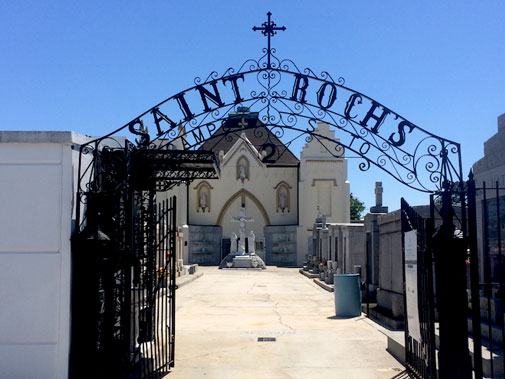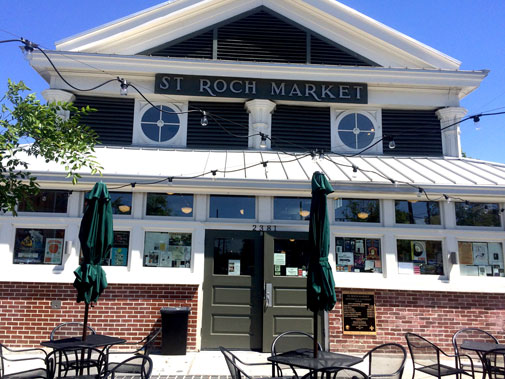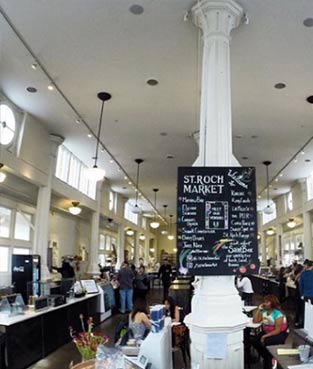St. Roch
Have an appetite for culture? Come hungry.
This New Orleans neighborhood took off in 1830 when the Crescent City was a bustling steamboat port. Home to one of the country’s largest populations of free people of color before the Civil War, the neighborhood has a proud history. Come discover it.
The community, formerly known as Faubourg Franklin, got its current name during a yellow fever epidemic in 1867 when the parish priest turned to Saint Roch, the patron of good health, to protect the community. The priest promised Saint Roch if no one in the parish died from yellow jack, he would build a chapel in his honor. As it turned out, no one from the Holy Trinity parish perished – in that epidemic or the one that followed in 1878, so the priest built a chapel as a shrine to St. Roch as well as a cemetery. You can still visit both today.
St. Roch Now
Since Hurricane Katrina, St. Roch has become a burgeoning artistic community with a number of unique art galleries and hip restaurants. At the center of all the excitement is St. Roch Market at 2381 St. Claude, a former fish market that is now a “Southern Food Hall” (Translation: The most awesome food court you’ll ever experience). We love the crepes from the Dirty Dishes stall. Good luck choosing between the “Who Dat” with praline sauce and the "Munch" made with pulled pork, mac and cheese and barbecue sauce.
The Art Garage, housed in a renovated auto body shop at 2231 St. Claude, is also a must-experience. On the third Saturday of every month, they host performance art, live graffiti and art exhibits of all kinds. And to get a real feel for the area, you might want to stop by Faubourg Wines at 2805 St. Claude Avenue. Owner Catherine Markel likes to say, “We are like the neighborhood water cooler, where people gather to discuss the events of the day — only with wine.”
Tip: You can reach this area on the Rampart/St. Claude Streetcar that boards on Canal Street.





